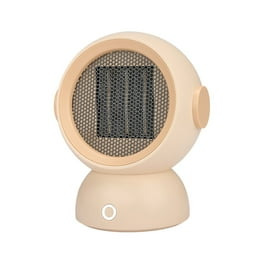The Greatest Guide To 1 Source Portable Air
Get This Report on 1 Source Portable Air
Table of Contents1 Source Portable Air Things To Know Before You BuyGet This Report about 1 Source Portable AirHow 1 Source Portable Air can Save You Time, Stress, and Money.The Ultimate Guide To 1 Source Portable Air1 Source Portable Air Fundamentals Explained
Running prices are based upon a power rate of 40c/kWh. The expenses for 3 months' usage in winter season are based upon 500 hours use, or about 6 hours each day for three months. Maximum warmth result is based upon the optimum power level of the models we've examined (we concentrate on higher power level heaters).
This depends upon what cost you're checking out upfront purchase, or running cost? As usual, there are compromises with either selection. Generally, small fan heating systems are cheaper to buy, however can have greater running prices. Oil column heating units will certainly be the cheapest on the market to run (on average) yet only by a narrow margin ahead of convection heating units (like panel and micathermic panels).
Some Known Details About 1 Source Portable Air
If you have a relatively easy to fix ceiling fan, it'll help disperse the heat around the area extra evenly. The models in our electric heaters test commonly array in cost from well under $100 to over $900, but we have actually located a greater price doesn't constantly imply far better performance. A number of pricey heaters have fallen short to thrill our testers, while some less expensive designs make for remarkably bargains.
As the name recommends, they radiate warm from a red-hot burner (so the household will need to take turns being in front of it). There are flooring and wall-mounted designs available. Glowing heating units are fairly low-cost. They have a cosy glow and individual warming effect, like resting in front of a fire.
The reasonably exposed burner can be a fire and safety danger. A piece of apparel dropped over it may spark, or little children playing around a floor design might melt themselves, so be cautious. Glowing heating systems usually set you back between $20 and $200. Oil-filled column heating units do not really burn oil they utilize electricity to heat up the oil that's sealed inside their columns or 'fins'.
Our 1 Source Portable Air PDFs
Some column heating systems aren't also oil-filled however instead make use of other material or look at this site home heating technology to work similarly - 1 Source Portable Air. The risk of fire with an oil column heating system is reduced contrasted to other heater kinds, however never no. Oil heating systems don't have exposed components like glowing heating units do, and their surface area temperature is lower than several various other heating unit types (their large surface makes up for it)
Oil column heaters won't take off, and while they don't melt their oil to produce warm, it's still flammable, so there is a fire risk if the oil leakages, if the heater ideas over and leaks, or if combustible items or fabric come right into call or fall on the heating system. You must work out the very same degree of care with oil heating units as for various other heating system types, and never hang hop over to these guys towels or clothes over one to completely dry them utilize a drying out rack rather, at the very least one metre away.
Column heaters are particularly beneficial in areas where they'll be activated for extended periods of time or where they'll run unattended, such as over night in a bedroom. The surface areas you're most likely to touch on a column heating system don't get as warm as various other sorts of electrical heaters. You can utilize a ceiling follower on really reduced rate to assist the column heating unit to disperse the heat quicker and extra evenly.
Oil-filled column heating units normally cost between $50 and $450. Convection and panel heating units draw cold air over an electric heating aspect.
3 Simple Techniques For 1 Source Portable Air

Convection and panel heating systems are much more portable than their oil-filled column heating unit equivalents since they're significantly lighter. Like a column heating unit, you can utilize a ceiling fan on really low speed to disperse the warm quicker and extra uniformly.

All About 1 Source Portable Air
Follower heaters are frequently smaller sized and more portable than other electric heating units. They additionally come in the type of tower follower heating systems, which can be better for dispersing heat around bigger Read Full Report spaces as a result of their taller profile. They can heat the air in a room more quickly, evenly and quickly than a few other heating unit types.
Fan heaters (ceramic or otherwise) usually price in between $60 and $900. Ceramic fan heaters aren't always any type of various in price to non-ceramic models.